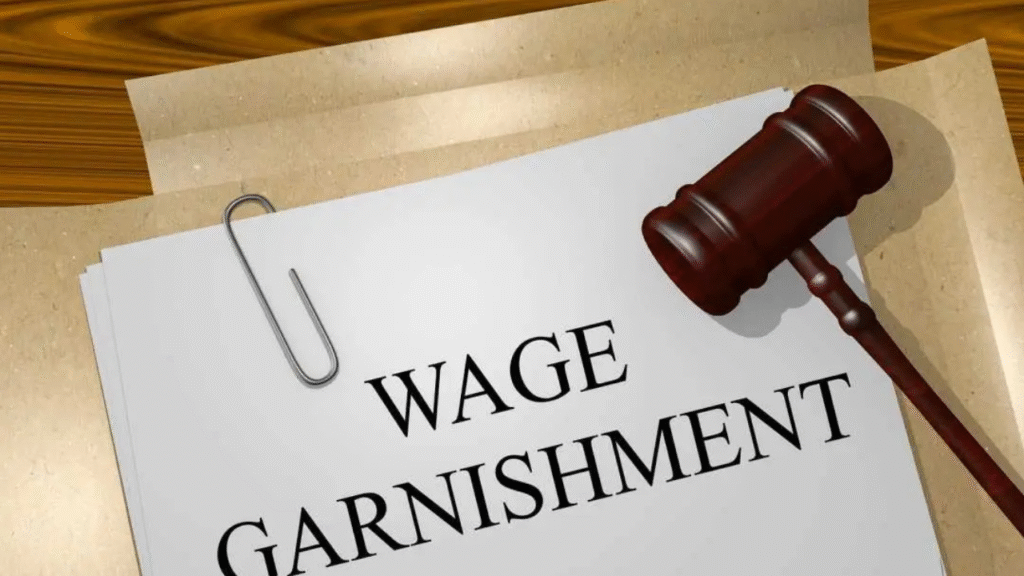As millions of Americans resume federal student loan payments following the end of pandemic-era relief, many face a serious consequence of default: wage garnishment. If federal student loans are left unpaid and go into default, the government can legally take up to 15% of your disposable income directly from your paycheck.
What Is Wage Garnishment?

Wage garnishment is a legal process where a portion of an individual’s paycheck is withheld by their employer to repay a debt. In the case of federal student loans, the U.S. Department of Education can initiate garnishment without obtaining a court order. This is known as “administrative wage garnishment.”
Once a borrower defaults on a federal loan—typically after missing payments for 270 days—the Department of Education can direct an employer to withhold up to 15% of the borrower’s disposable income. Disposable income is the amount remaining after mandatory deductions such as taxes and Social Security.
How Wage Garnishment Works for Student Loans
After a federal student loan goes into default:
- The borrower receives a 30-day notice of the Department’s intent to garnish wages.
- During this period, the borrower can request a hearing to contest the garnishment or negotiate a repayment plan.
- If no action is taken, the garnishment begins without further warning.
Unlike private lenders, the federal government has the authority to collect through garnishment without going to court, making it a swift and hard-to-contest process.
Who Is at Risk?
Borrowers who have gone 270 days without making a payment on their federal student loans are considered to be in default and are at risk of wage garnishment. According to recent data, nearly one in five federal student loan borrowers were behind on payments as of late 2023.
Groups most vulnerable include first-generation college students, borrowers who didn’t complete their degrees, and individuals in low-income or unstable jobs. Wage garnishment can worsen their financial situation, reduce access to credit, and even impact housing and employment opportunities.
How to Prevent Wage Garnishment
1. Keep Loans in Good Standing
To avoid default, borrowers should:
- Make minimum monthly payments consistently.
- Apply for deferment or forbearance if experiencing temporary hardship.
- Enroll in an income-driven repayment (IDR) plan, which bases monthly payments on income and family size and can reduce payments to as little as $0.
2. Get Out of Default
If you’re already in default, you still have options to stop or prevent garnishment:
Loan Rehabilitation
This program requires borrowers to make nine on-time monthly payments over ten months. Once completed, the loan is removed from default, and garnishment stops. Rehabilitation can only be used once per loan.
Loan Consolidation
This allows you to combine your defaulted loan into a new Direct Consolidation Loan. To qualify, you must either make three on-time monthly payments or agree to repay the new loan under an IDR plan. Consolidation is typically faster than rehabilitation but can only be done once per loan.
3. Request a Hearing
If you receive a wage garnishment notice, you have 30 days to request a hearing. You can challenge the garnishment for reasons such as:
- The debt doesn’t belong to you.
- You’ve already paid the loan.
- The garnishment would cause financial hardship.
- You’re already making payments under an agreement.
Borrowers who win their hearings may have garnishment reduced or stopped altogether.
Other Consequences of Default
In addition to garnishment, defaulting on a federal student loan can lead to:
- A significant drop in your credit score.
- Ineligibility for future federal financial aid.
- Seizure of federal and state tax refunds.
- Withholding of Social Security payments, even in retirement.
These penalties can last for years and may take time and effort to reverse.
Post-Pandemic Repayment Challenges
During the COVID-19 pandemic, federal student loan payments were paused from 2020 through 2023, providing temporary relief to over 40 million borrowers. However, since payments resumed, many are struggling to adjust due to rising living costs and job market challenges.
As of early 2025, over 7 million borrowers are in some form of delinquency or default. The Department of Education has resumed collection efforts, including wage garnishments, after years of suspension. For those already struggling financially, this could make day-to-day living even harder.
Fresh Start Initiative
In response to rising defaults, the Department of Education launched the Fresh Start initiative. This temporary program offers borrowers with defaulted loans a path back to good standing. It includes:
- Immediate removal of default status.
- Access to IDR plans.
- Suspension of wage garnishment and other collections.
- Restoration of federal student aid eligibility.
Eligible borrowers are encouraged to take advantage of this program before it expires, as it provides a rare opportunity to reset without the usual penalties of default.
What You Should Do Now
If you’re at risk of default or already in it, here are the steps to take:
- Check Your Loan Status: Log in to your loan servicer account or the federal student aid portal to check if your loans are current or in default.
- Explore Repayment Options: Consider enrolling in an income-driven repayment plan or applying for deferment or forbearance if needed.
- Act Quickly: If you receive a garnishment notice, respond within 30 days to avoid automatic deductions from your paycheck.
- Consider Fresh Start: If eligible, use this initiative to bring your loans out of default and avoid collections.
Final Thoughts
Wage garnishment for unpaid federal student loans is a serious consequence that can significantly affect your financial well-being. The government has powerful tools to collect defaulted debt, and garnishment is one of the most aggressive. But it’s not inevitable. By staying informed and taking proactive steps whether through repayment plans, rehabilitation, or consolidation you can avoid garnishment and regain control of your finances.




